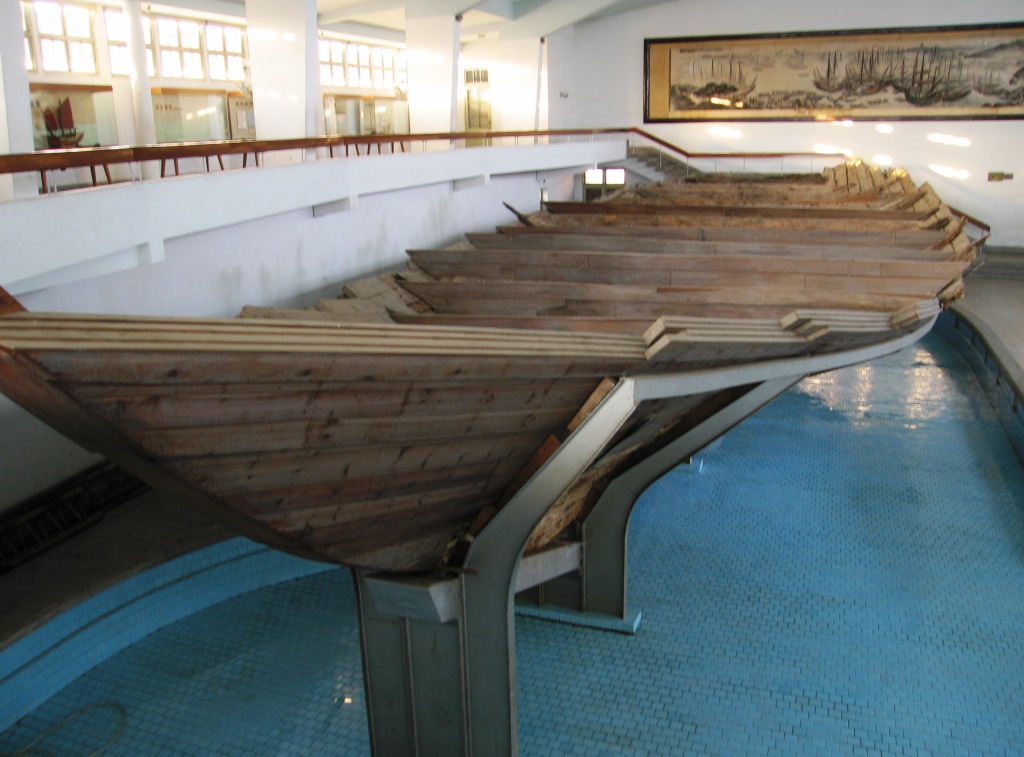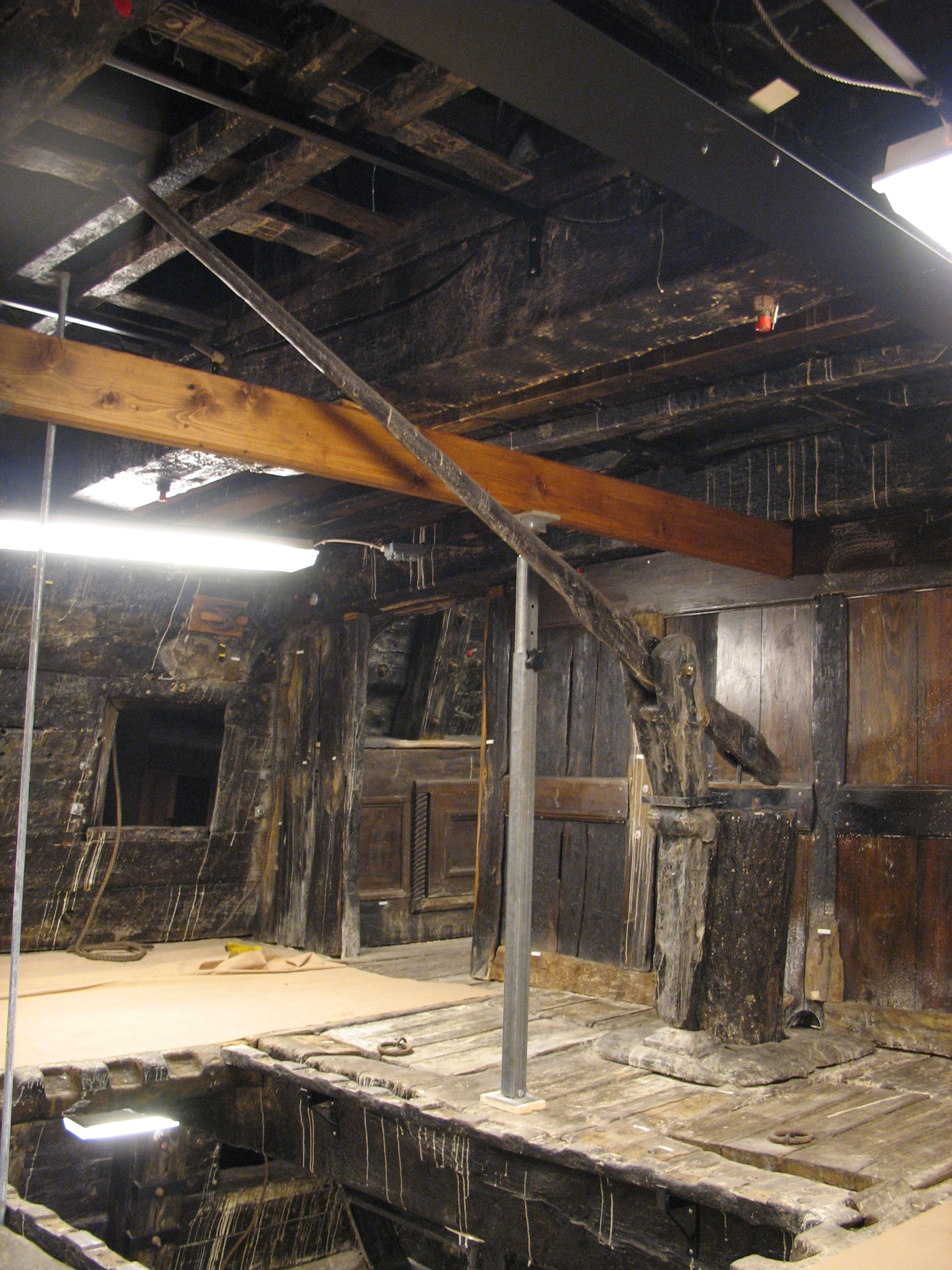|
Limber Hole
A limber hole is a drain hole through a frame or other structural member of a boat designed to prevent water from accumulating against one side of the frame, and allowing it to drain toward the bilge. Limber holes are common in the bilges of wooden boats. The term may be extended to cover drain holes in floors. Limber holes are created in between bulkhead (partition), bulkheads so that one compartment does not fill with water. The limber holes allow water to drain into the lowest part of the bilge so that it can be pumped out by a single bilge pump (or more usually, one electric and one manual pump). The term is also commonly applied to the holes in mid-20th century submarine upperworks, which allow drainage from the superstructure. References * Chapelle, Howard I. (1994, p252). ''Yacht Designing and Planning''. W.W. Norton. . * Brewer, Ted (1994, p139). ''Understanding Boat Design'' (4th ed.). International Marine, a division of McGraw Hill. . Shipbuilding Nautical ... [...More Info...] [...Related Items...] OR: [Wikipedia] [Google] [Baidu] |
USS Silversides (SS-236)
USS ''Silversides'' (SS/AGSS-236) is a ''Gato''-class submarine, the first ship of the United States Navy to be named for the silversides. ''Silversides'' was one of the most successful submarines in the Pacific Theater of World War II, with 23 confirmed sinkings, totalling more than of shipping. She received a Presidential Unit Citation for cumulative action over four patrols, and twelve battle stars. She presently serves as a museum ship in Muskegon, Michigan, and is a National Historic Landmark. Construction Her keel was laid down on 4 November 1940, by the Mare Island Navy Yard in Vallejo, California. She was launched on 26 August 1941, sponsored by Mrs. Elizabeth H. Hogan, and commissioned on 15 December 1941, with Lieutenant Commander Creed C. Burlingame in command. Service in World War II First patrol: April–June 1942 After shakedown off the California coast, ''Silversides'' set course for Hawaii, arriving at Pearl Harbor on 4 April 1942. Departing P ... [...More Info...] [...Related Items...] OR: [Wikipedia] [Google] [Baidu] |
Bilge
The bilge of a ship or boat is the part of the hull that would rest on the ground if the vessel were unsupported by water. The "turn of the bilge" is the transition from the bottom of a hull to the sides of a hull. Internally, the bilges (usually used in the plural in this context) is the lowest compartment on a ship or seaplane, on either side of the keel and (in a traditional wooden vessel) between the floors. The first known use of the word is from 1513. Bilge water The word is sometimes also used to describe the water that collects in this area. Water that does not drain off the side of the deck or through a hole in the hull, which it would typically do via a scupper, instead drains down into the ship into the bilge. This water may be from rough seas, rain, leaks in the hull or stuffing box, or other interior spillage. The collected water must be pumped out to prevent the bilge from becoming too full and threatening to sink the ship. Bilge water can be found aboard a ... [...More Info...] [...Related Items...] OR: [Wikipedia] [Google] [Baidu] |
Bulkhead (partition)
A bulkhead is an upright wall within the hull (watercraft), hull of a ship, within the fuselage of an airplane, or a car. Other kinds of partition elements within a ship are deck (ship), decks and deckheads. Etymology The word ''bulki'' meant "cargo" in Old Norse. During the 15th century sailors and builders in Europe realized that walls within a vessel would prevent cargo from shifting during passage. In shipbuilding, any vertical panel was called a head. So walls installed abeam (side-to-side) in a vessel's hull were called "bulkheads". Now, the term bulkhead applies to every vertical panel aboard a ship, except for the hull itself. History Bulkheads were known to the ancient Greeks, who employed bulkheads in triremes to support the back of rams. By the Athenian trireme era (500 BC), the hull was strengthened by enclosing the bow behind the ram, forming a bulkhead compartment. Instead of using bulkheads to protect ships against rams, Greeks preferred to reinforce the hull ... [...More Info...] [...Related Items...] OR: [Wikipedia] [Google] [Baidu] |
Bilge Pump
A bilge pump is a water pump used to remove bilge water. Since fuel can be present in the bilge, electric bilge pumps are designed to not cause sparks. Electric bilge pumps are often fitted with float switches which turn on the pump when the bilge fills to a set level. Since bilge pumps can fail, use of a backup pump is often advised. The primary pump is normally located at the lowest point of the bilge, while the secondary pump would be located somewhat higher. This ensures that the secondary pump activates only when the primary pump is overwhelmed or fails, and keeps the secondary pump free of the debris in the bilge that tends to clog the primary pump. Ancient bilge force pumps had a number of common uses. Depending on where the pump was located in the hull of the ship, it could be used to suck in sea water into a live fish tank to preserve fish until the ship was docked and the fish ready to be sold. Another use of the force pump was to combat fires. Water would again be ... [...More Info...] [...Related Items...] OR: [Wikipedia] [Google] [Baidu] |
Shipbuilding
Shipbuilding is the construction of ships and other Watercraft, floating vessels. In modern times, it normally takes place in a specialized facility known as a shipyard. Shipbuilders, also called shipwrights, follow a specialized occupation that traces its roots to before recorded history. Until recently, with the development of complex non-maritime technologies, a ship has often represented the most advanced structure that the society building it could produce. Some key industrial advances were developed to support shipbuilding, for instance the sawing of timbers by Saw#Mechanically powered saws, mechanical saws propelled by windmills in Dutch shipyards during the first half of the 17th century. The design process saw the early adoption of the logarithm (invented in 1615) to generate the curves used to produce the shape of a hull (watercraft), hull, especially when scaling up these curves accurately in the mould Lofting, loft. Shipbuilding and ship repairs, both commercial an ... [...More Info...] [...Related Items...] OR: [Wikipedia] [Google] [Baidu] |



